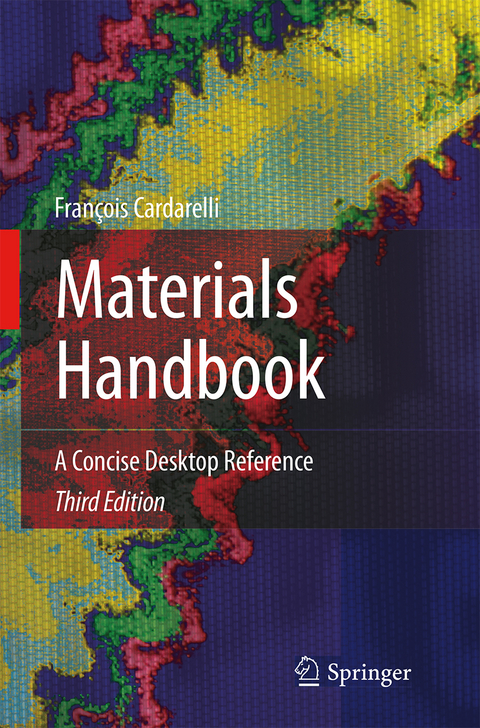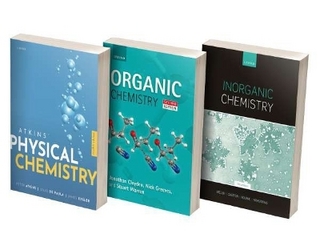
Materials Handbook
Springer International Publishing
978-3-319-38923-3 (ISBN)
The unique and practical Materials Handbook (third edition) provides quick and easy access to the physical and chemical properties of very many classes of materials. Its coverage has been expanded to include whole new families of materials such as minor metals, ferroalloys, nuclear materials, food, natural oils, fats, resins, and waxes. Many of the existing families-notably the metals, gases, liquids, minerals, rocks, soils, polymers, and fuels-are broadened and refined with new material and up-to-date information. Several of the larger tables of data are expanded and new ones added. Particular emphasis is placed on the properties of common industrial materials in each class. After a chapter introducing some general properties of materials, each of twenty-four classes of materials receives attention in its own chapter. The health and safety issues connected with the use and handling of industrial materials are included.
Detailed appendices provide additional information on subjects as diverse as crystallography, spectroscopy, thermochemical data, analytical chemistry, corrosion resistance, and economic data for industrial and hazardous materials. Specific further reading sections and a general bibliography round out this comprehensive guide. The index and tabular format of the book makes light work of extracting what the reader needs to know from the wealth of factual information within these covers.
Dr. François Cardarelli has spent many years compiling and editing materials data. His professional expertise and experience combine to make this handbook an indispensable reference tool for scientists and engineers working in numerous fields ranging from chemical to nuclear engineering. Particular emphasis is placed on the properties of common industrial materials in each class. After a chapter introducing some general properties of materials, materials are classified as follows.
- ferrous metals and their alloys;
- ferroalloys;
- common nonferrous metals;
- less common metals;
- minor metals;
- semiconductors and superconductors;
- magnetic materials;
- insulators and dielectrics;
- miscellaneous electrical materials;
- ceramics, refractories and glasses;
- polymers and elastomers;
- minerals, ores and gemstones;
- rocks and meteorites; soils and fertilizers;
- construction materials;
- timbers and woods;
- fuels, propellants and explosives;
- composite materials;
- gases;
- liquids;
- food, oils, resin and waxes;
- nuclear materials.
- food materials
François Cardarelli has had wide-ranging commercial and industrial experience of materials, commodities and processes: at CNRS in Paris he designed and used electrochemical sensors for pollution control;as a research scientist at Électricité de France he helped to invent methods of preparation of industrial titanium and tantalum electrodes;as a registered professional consultant in Toulouse, he solved problems in electrochemical engineering, the selection of electrode materials, corrosion and high-temperature operation;at the Avestor Corporation, he worked as an industrial electrochemist and materials expert in charge of strategic raw materials, scientific and technical support for lithium processing and, as Battery Product Leader, in charge of lithium polymer batteries for electric vehicles, down-hole drilling anf telecommunications he defined battery requirements and specifications and invented pyrometallurgical and hydrometallurgical processing for spent lithium batteries;at Rio Tinto Iron and Titanium, he was principal chemist for Materials at Sorel-Tracy in Québec dealing with valorization processes for industrial residues and refractory benchmarking. He invented two processes for electrowinning of titanium from slags and the electrolysis of metallic iron and regeneration of chlorine from metal chloride wastes.at the Material and Electrochemical Research (MER) Corp., Tucson (Arizona, USA) he was principal electrochemist working on the electrowinning of titanium metal powder from composite anodes and other materials-related projects.following a period as Manager of Recycling at 5NPlus Inc in Saint-Laurent Québec, since 2010, he has been President and owner of the company Electrochem Technologies & Materials Inc., based in Montreal (Quebec), Canada, manufacturing industrial electrodes, producing niobium, tantalum, and tungsten fine chemicals from industrial by-products and concentrates, inventing, developing, patenting and commercializing novel electrochemical and chemical technologies for electrowinning iron and iron-rich alloys from industrial wastes and effluents, and recycling rare earth oxides from spent fluorescent lamps. Doctor Cardarelli is also the author of Encyclopaedia of Scientific Units, Weights and Measures for Springer (ISBN: 1-85233-682-X).
Introduction.- Properties of Materials.- Ferrous Metals and Their Alloys.- Common Nonferrous Metals.- Less Common Nonferrous Metals.- Semiconductors.- Superconductors.- Magnetic Materials.- Insulators and Dielectrics.- Miscellaneous Electrical Materials.- Ceramics, Refractories and Glasses.- Polymers and Elastomers.- Minerals, Ores and Gemstones.- Rocks and Meteorites.- Soils and Fertilizers.- Cements, Concrete, Building Stones and Construction Materials.- Timbers and Woods.- Fuels, Propellants and Explosives.- Composite Materials.- Gases.- Liquids.- Food Materials.- Natural Oils, Fats, Resins and Waxes.- Nuclear Materials.- Materials Occupational Health and Safety.- Globally Harmonized System.- Appendices: Background Data for the Chemical Elements; Chart for Semi-Microchemical Qualitative Identification of Metal Cations; NIST Thermochemical Data for Pure Substances; Hydrogen-Like Atom Spectra; Hydrogen-like Atom Spectra; Crystal Field Theory; Transparent Materials for Optical Windows; Corrosion Resistance of Materials Towards Various Corrosive Media; Astonomical Data; Materials Societies.- Bibliography.- Index.
| Erscheint lt. Verlag | 6.9.2018 |
|---|---|
| Zusatzinfo | CXXXVIII, 2254 p. 175 illus., 25 illus. in color. In 2 volumes, not available separately. |
| Verlagsort | Cham |
| Sprache | englisch |
| Maße | 155 x 235 mm |
| Themenwelt | Naturwissenschaften ► Chemie ► Anorganische Chemie |
| Naturwissenschaften ► Chemie ► Technische Chemie | |
| Technik ► Maschinenbau | |
| Schlagworte | Characterization and Evaluation of Materials • Chemistry and Materials Science • construction materials • Electrical Properties of Materials • Industrial Chemistry/Chemical Engineering • Inorganic Chemistry • materials characterization • materials engineering • Materials Used for Energy Production • Materialwissenschaft • Metallic materials • Metal Properties and Descriptions • Physico-chemical Properties of Materials • Processing of Ceramics, Glasses and Refractories • Soil and Fertilizer Chemistry • Sources of Minerals • Structural Materials • Superconductor Properties |
| ISBN-10 | 3-319-38923-8 / 3319389238 |
| ISBN-13 | 978-3-319-38923-3 / 9783319389233 |
| Zustand | Neuware |
| Informationen gemäß Produktsicherheitsverordnung (GPSR) | |
| Haben Sie eine Frage zum Produkt? |
aus dem Bereich
